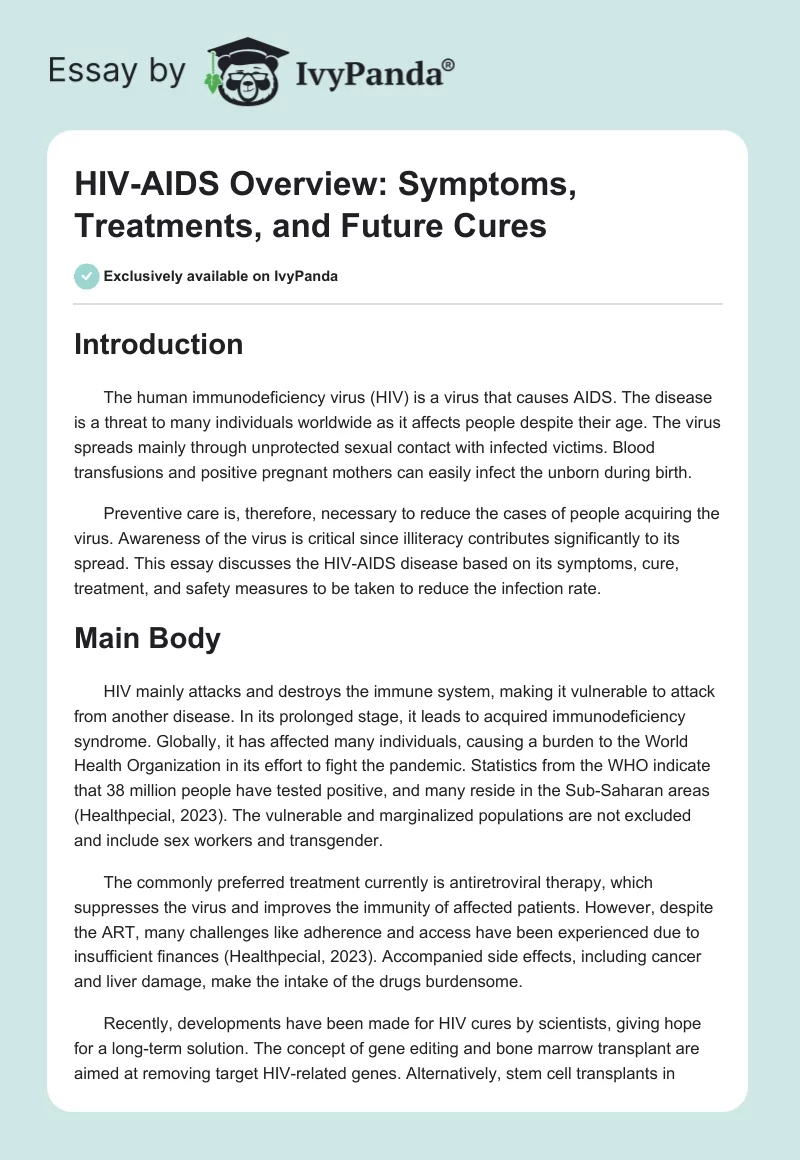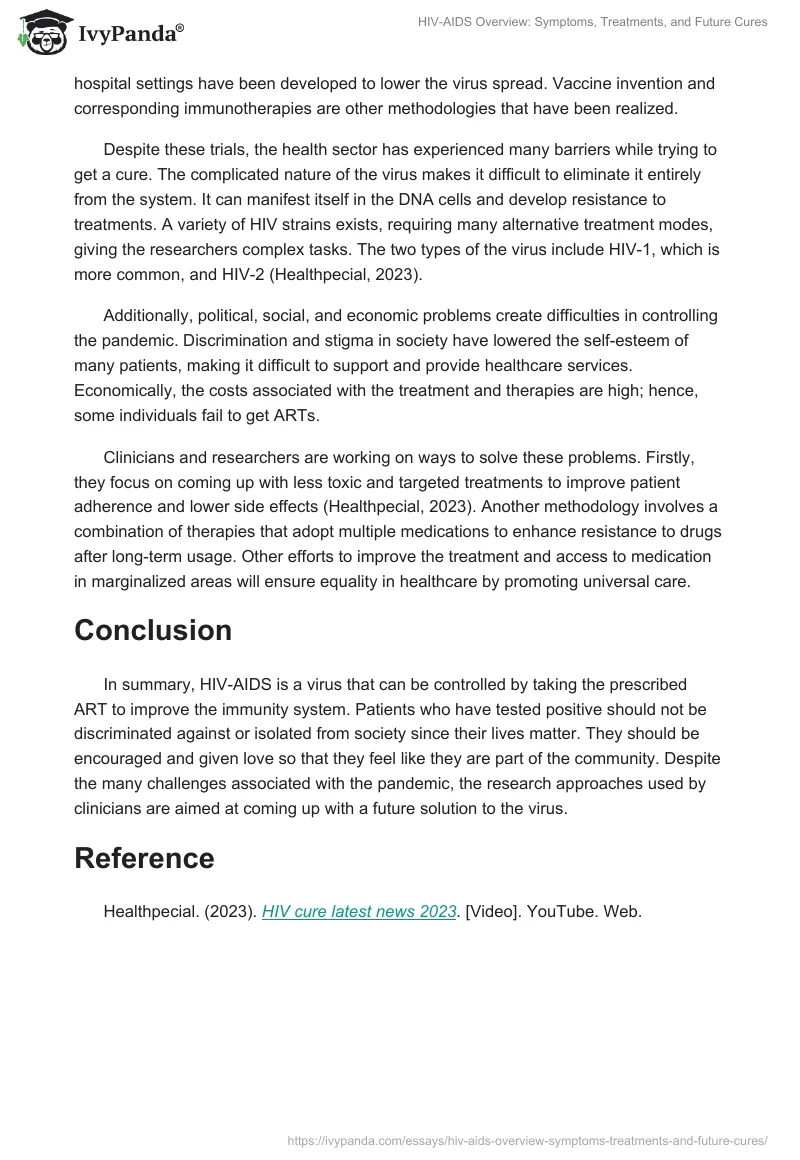Introduction
The human immunodeficiency virus (HIV) is a virus that causes AIDS. The disease is a threat to many individuals worldwide as it affects people despite their age. The virus spreads mainly through unprotected sexual contact with infected victims. Blood transfusions and positive pregnant mothers can easily infect the unborn during birth.
Preventive care is, therefore, necessary to reduce the cases of people acquiring the virus. Awareness of the virus is critical since illiteracy contributes significantly to its spread. This essay discusses the HIV-AIDS disease based on its symptoms, cure, treatment, and safety measures to be taken to reduce the infection rate.
Main Body
HIV mainly attacks and destroys the immune system, making it vulnerable to attack from another disease. In its prolonged stage, it leads to acquired immunodeficiency syndrome. Globally, it has affected many individuals, causing a burden to the World Health Organization in its effort to fight the pandemic. Statistics from the WHO indicate that 38 million people have tested positive, and many reside in the Sub-Saharan areas (Healthpecial, 2023). The vulnerable and marginalized populations are not excluded and include sex workers and transgender.
The commonly preferred treatment currently is antiretroviral therapy, which suppresses the virus and improves the immunity of affected patients. However, despite the ART, many challenges like adherence and access have been experienced due to insufficient finances (Healthpecial, 2023). Accompanied side effects, including cancer and liver damage, make the intake of the drugs burdensome.
Recently, developments have been made for HIV cures by scientists, giving hope for a long-term solution. The concept of gene editing and bone marrow transplant are aimed at removing target HIV-related genes. Alternatively, stem cell transplants in hospital settings have been developed to lower the virus spread. Vaccine invention and corresponding immunotherapies are other methodologies that have been realized.
Despite these trials, the health sector has experienced many barriers while trying to get a cure. The complicated nature of the virus makes it difficult to eliminate it entirely from the system. It can manifest itself in the DNA cells and develop resistance to treatments. A variety of HIV strains exists, requiring many alternative treatment modes, giving the researchers complex tasks. The two types of the virus include HIV-1, which is more common, and HIV-2 (Healthpecial, 2023).
Additionally, political, social, and economic problems create difficulties in controlling the pandemic. Discrimination and stigma in society have lowered the self-esteem of many patients, making it difficult to support and provide healthcare services. Economically, the costs associated with the treatment and therapies are high; hence, some individuals fail to get ARTs.
Clinicians and researchers are working on ways to solve these problems. Firstly, they focus on coming up with less toxic and targeted treatments to improve patient adherence and lower side effects (Healthpecial, 2023). Another methodology involves a combination of therapies that adopt multiple medications to enhance resistance to drugs after long-term usage. Other efforts to improve the treatment and access to medication in marginalized areas will ensure equality in healthcare by promoting universal care.
Conclusion
In summary, HIV-AIDS is a virus that can be controlled by taking the prescribed ART to improve the immunity system. Patients who have tested positive should not be discriminated against or isolated from society since their lives matter. They should be encouraged and given love so that they feel like they are part of the community. Despite the many challenges associated with the pandemic, the research approaches used by clinicians are aimed at coming up with a future solution to the virus.
Reference
Healthpecial. (2023). HIV cure latest news 2023. [Video]. YouTube. Web.


